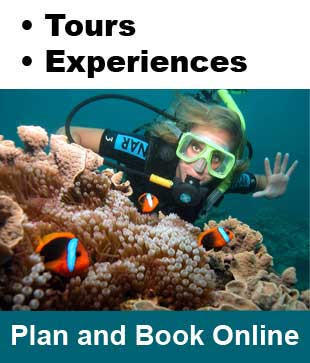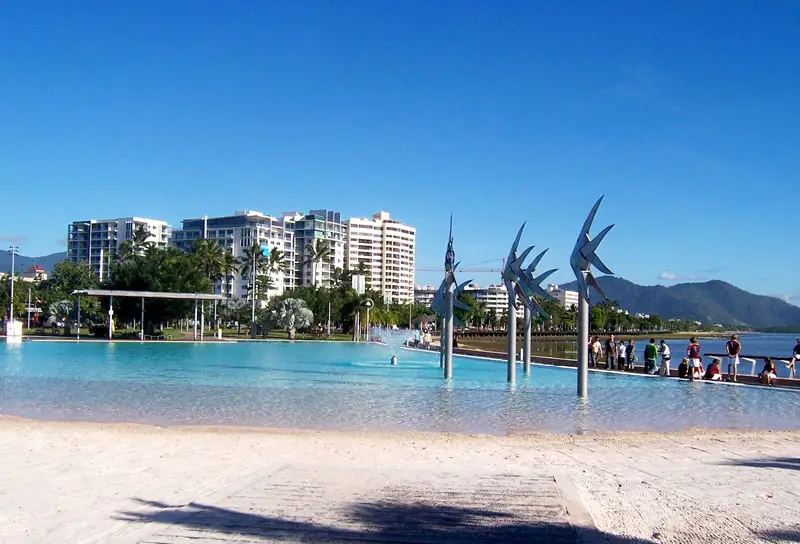
Cairns is one of Australia’s most popular tropical travel destinations, loved by Australians and foreign tourists alike who are drawn by its tropical climate and close proximity to many attractions. The Great Barrier Reef can be reached in less than an hour by boat.
Where is it?: Queensland: North. Cairns is located 1,678 km north west of Brisbane via Bruce Highway.
Cairns is located on the east coast of Cape York Peninsula on a coastal strip between the Coral Sea and the Great Dividing Range. The northern part of the city is located on Trinity Bay and the city centre is located on Trinity Inlet. Some of the city’s suburbs are located on fertile flood plains. The Mulgrave River and Barron River flow within the city’s boundary but not through the city itself. The city centre’s foreshore is located on a mud flat. The highest mountain in Queensland, Mount Bartle Frere, is located within the city’s boundaries.
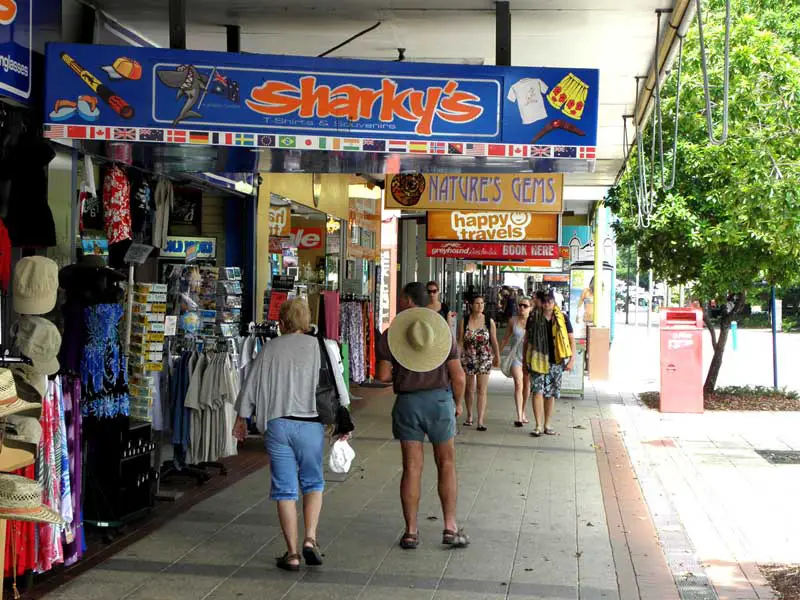
Though the sugar industry is still a major income producer for Cairns, tourism is number one these days and this is reflected in the way the city has opened its doors and laid out the welcome mat for visitors from all over the world. The city is very visitor friendly – when walking on the Esplanade by the swimming lagoon on the ocean side, or the many cafes, restaurants and shops on the city side, one feels safe and comfortable, even late at night when all these visitor facilities are still open.
The city has used its natural surroundings to its advantage, with the construction of several small theme parks for tourists. Among them are Rainforestation Nature Park, Tjapukai Aboriginal Cultural Park, and Kuranda Skyrail Rainforest Cableway, which extends for 7.5 km over World Heritage rainforest. Cairns is also a major international destination for scuba diving due to its close proximity to the Great Barrier Reef. Other recreational activities popular with tourists include whitewater rafting and snorkelling.


Cairns is reached by road via the Bruce Highway runs for 1700 km from Brisbane and terminates in Cairns on the corner of Mulgrave Roads and Sheridan Streets in the CBD. At this point, the Captain Cook Highway (also referred to as the Cook Highway), between Cairns and Port Douglas approximately 70 km to the northwest, commences.
Cairns is served by long distance coaches to Brisbane, and regional cities to the south. Coaches also operate west to Mount Isa via Townsville and the Northern Territory. Desert Venturer Coaches operate twice weekly to Alice Springs and Darwin (weekly service in wet season).
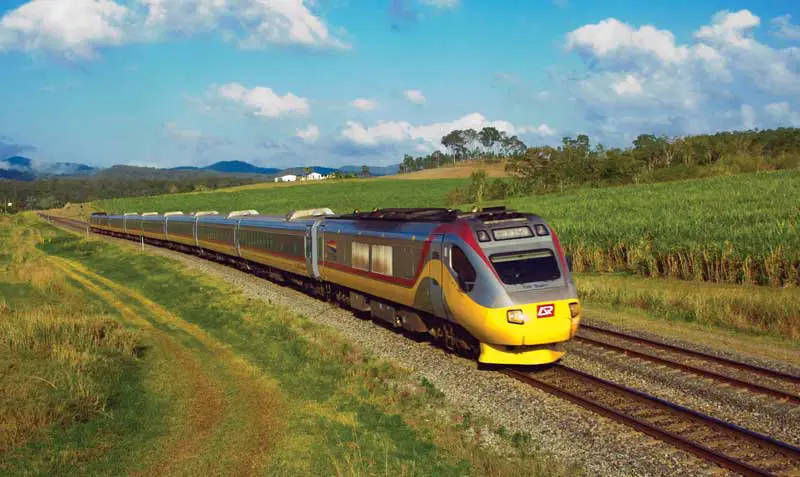
Cairns is the terminus for Queensland’s North Coast railway line, which follows the eastern seaboard north from Brisbane. Services are operated by Queensland Rail (QR) feature the high speed, ulta-modern tilt train.
Cairns International Airport is located 7km north of Cairns City between the CBD and the Northern Beaches. It is Australia’s sixth busiest in terms of international and domestic passenger movements. The Airport has a domestic terminal, a separate international terminal, and a general aviation area. The airport handles international flights, and daily flights to major Australian cities, tourist destinations, and regional destinations throughout North Queensland. It is an important base for general aviation serving the Cape York Peninsula and Gulf of Carpentaria Communities. The Cairns airport is also a base for the Royal Flying Doctor Service.
A public transport network is operated throughout the city by Sunbus. A transit mall is located in the CBD through which all services operate. Services include most parts of the city, from Palm Cove on the Northern Beaches to Gordonvale in the south, all travelling via the CBD. Bus services operated by Whitecar Coaches run to Kuranda and to the Atherton Tableland. A smaller minibus service, Jon’s Kuranda Bus runs between Cairns and Kuranda.
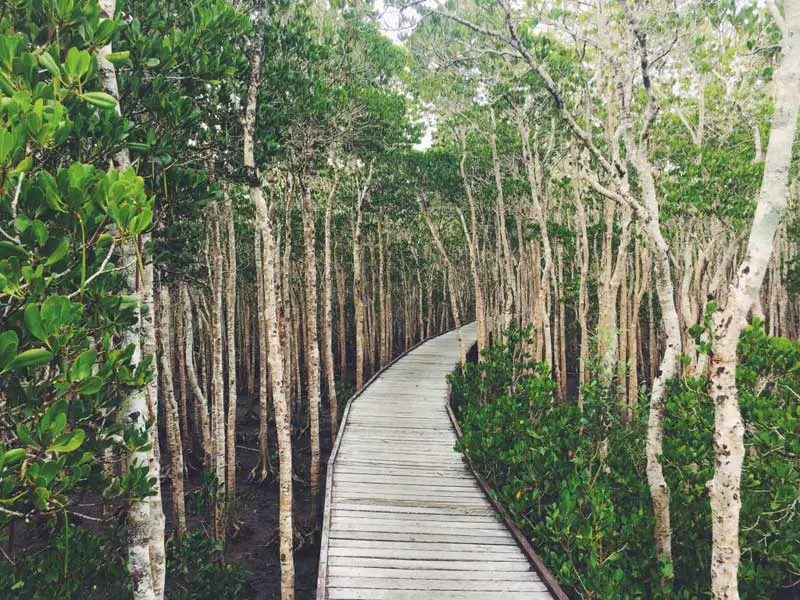
The Jack Barnes Bicentennial Mangrove Boardwalk is a special place to learn about tropical Australian mangroves and saltmarsh. Visitors can learn about a broad range of species, and some of the key functional attributes of these tidal wetland systems. The walk has two distinct parts, heading either north or south into closed mangrove forests from the carpark situated adjacent to a small saltmarsh and saltpan area.
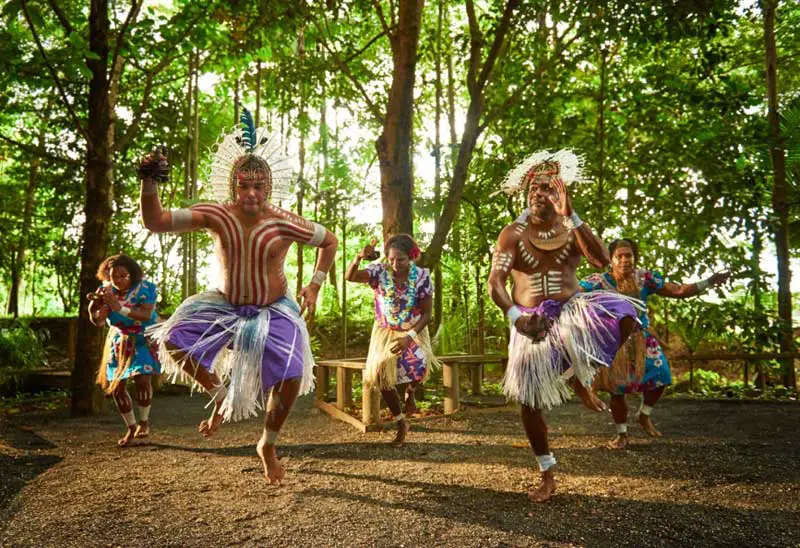
Tjapukai (pronounced jab-u-ki) is a unique Indigenous cultural experience that allows you to meet and interact with the local Tjapukai Aboriginal people as they demonstrate their ancient techniques and share their knowledge about the world. These enthusiastic people have been rehearsing for 40,000 years to showcase their culture to you.
Surrounding area
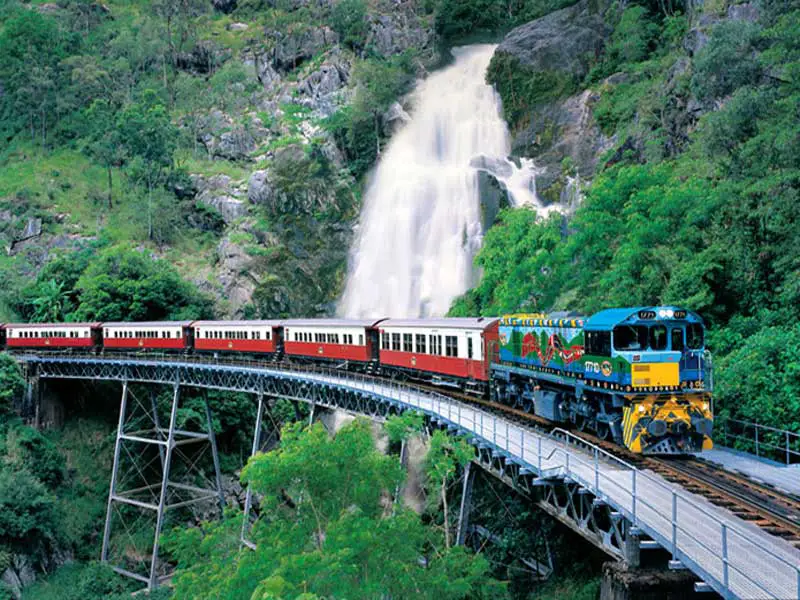
For a great day out from Cairns, you can either take the 30 minute drive from Cairns into the mountains behind the city, or opt for a ride on the world renowned Kuranda Scenic Railway, which winds its way up a gorge through 15 tunnels and over 40 bridges. The line clings to the rock face and passengers can almost touch the waterfalls as they climb the mountains towards the Atherton Tableland. Offering views back across the Coral Sea, the railway was built by John Robb between 1886 and 1891 and is recognised as a masterpiece of railway engineering.
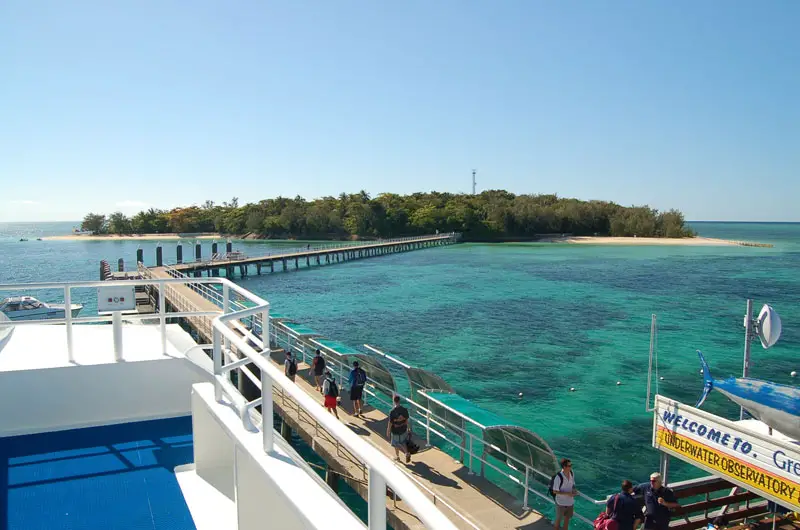
Green Island is a small coral cay on the Great Barrier Reef. It is a beautiful spot – a little over-commercialised for some, but not for me – with golden sand beaches surrounding what looks like a totally green island due to the abundance of National Park. There is a 46 luxury resort where people can holiday, or you can come across for a day or half day visit. The Great Barrier Reef is made up of over 900 islands but only some of them are good for visiting, staying on, exploring and playing on. Many of these more popular islands are located a short boat ride away from Cairns.
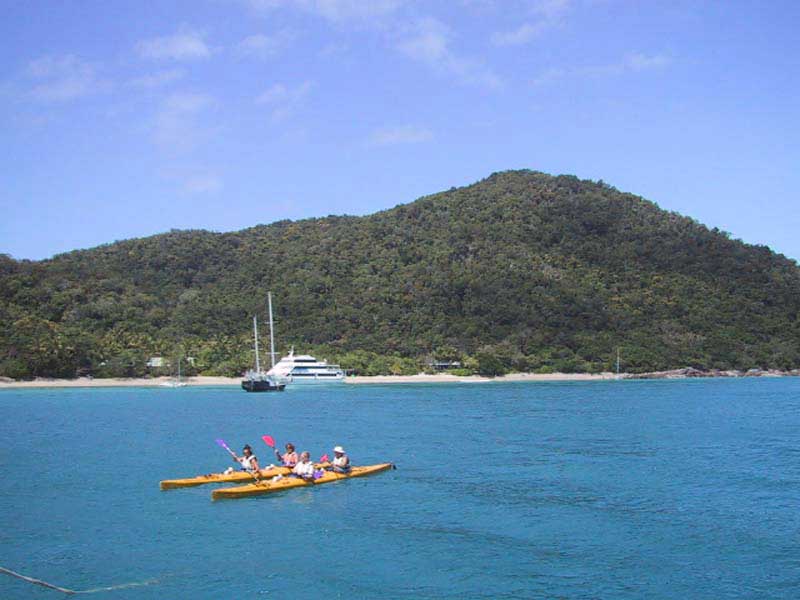
Fitzroy Island is a 45-minute/30km boat trip by the Fitzroy Fast Cat from Cairns. Though it is a continental island – as opposed to a reef island – Fitzroy Island is surrounded by a reef system that forms part of the Great Barrier Reef Marine Park, making it the perfect accessible base for snorkelling, diving and exploring the reef. Idyllic beaches lead into the safe, sheltered waters, which are also ideal for swimming and water sports as well as yachting and boating. Fitzroy Island is covered with magnificent rainforest and features many walking tracks ranging from a short stroll to Nudey Beach through to a more challenging hike to the Summit. The island is surrounded by beautiful fringing reefs which are teeming with marine life. The best snorkelling is off the rocks between Welcome Bay and Nudey Beach. Expect to see Turtles, tropical fish and many colourful corals.
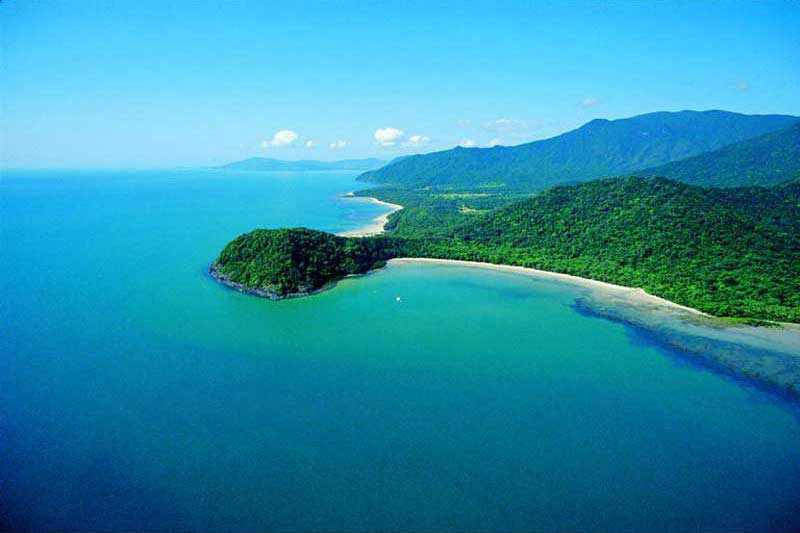
Daintree National Park and Cape Tribulation (130 km north) are popular areas for experiencing a tropical rainforest. North of Daintree National Park and Cape Tribulation is Cooktown, the starting point for people wanting to explore Cape York Peninsula.
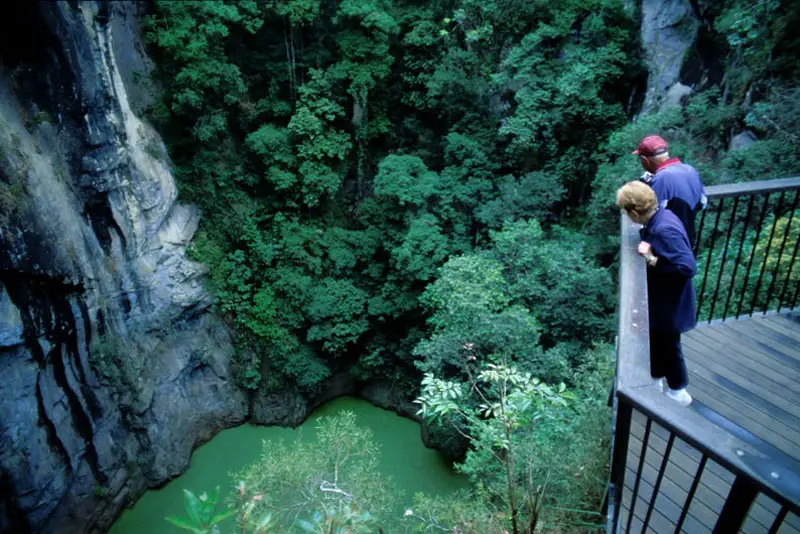
Less than an hours drive from Cairns, Atherton Tableland is an area of world heritage rainforests, waterfalls, national parks, crater lakes and volcanic formations, set a backdrop of rolling green hills. Its numerous villages cater providing services such as accommodation, dining and shopping facilities for locally grown produce like wines and coffee. Travel on one of Australia’s finest tourist railways to the picturesque mountain retreat of Kuranda, the world famous village in the rainforest.
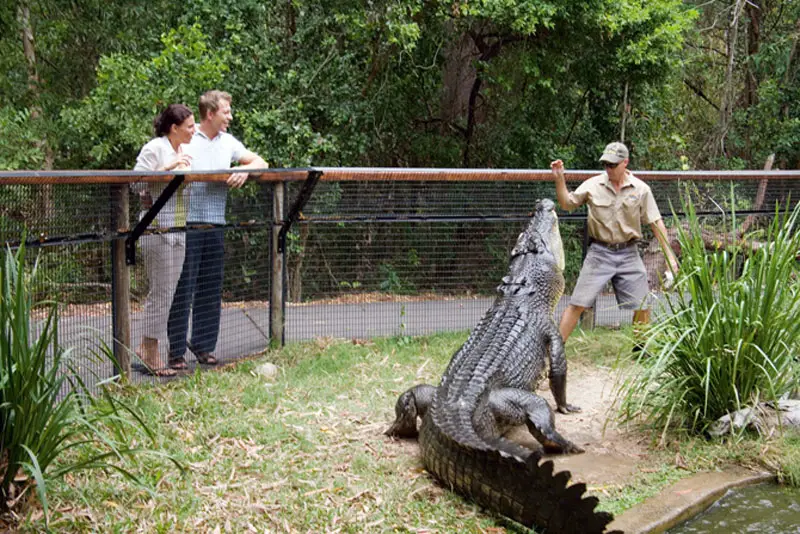
A pleasant day’s drive north from Cairns takes in Mossman Gorge and the the resort town of Port Douglas. Along the way, you can stop off to see crocodiles in their natural environment at Hartley’s Crocodile Adventures. Set on 10 hectares of World Heritage land, this eco-adventure facility gives an introduction to Far North Queensland’s interesting wildlife. Spot a crocodile, discover a cassowary, walk through an innovative wildlife park and then visit the Crocodile Farm for insight into these feared creatures.
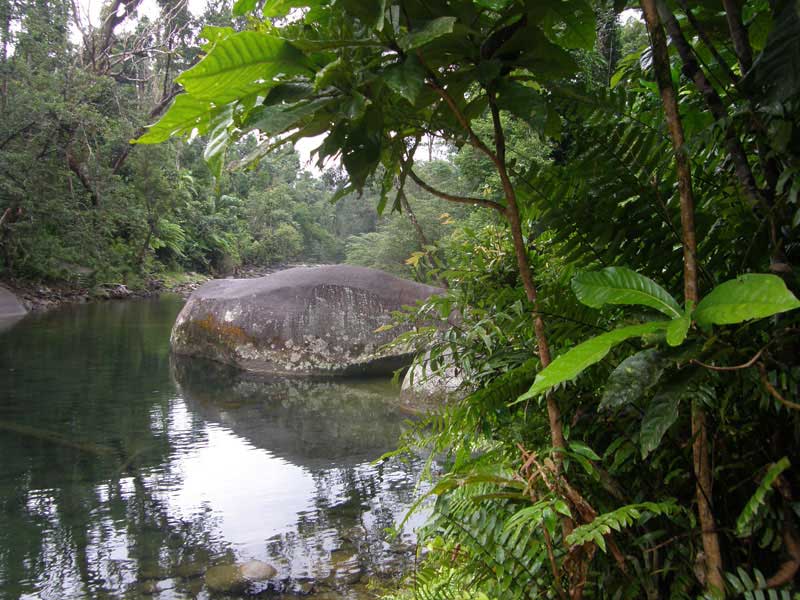
Surrounded by thick, lush rainforest, the Babinda Boulders (65km south) is a popular swimming hole and tourist attraction. It is a classic example of the fast flowing tropical creeks in the area that are perfect for afternoon dips in the cool water to combat the tropical heat.
European settlement did not occur until October 1873 with the discovery of gold at Palmer River, leading to the creation of port facilities at Cooktown. other gold discoveries led to the town’s further growth. Cairns remained a small town until 1882 when the establishment of sugar plantations in the Mulgrave and Russell River valleys began its growth into the city it is today. Cairns was gazetted as a town in 1903, became a city in 1923 and the terminus for the Brisbane railway line in 1924. It was an important air and naval base during World War II. In 1984 the airport was upgraded to international standard thus giving the city the boost it needed.
Origin of name: In June 1770 British explorer James Cook sailed into an inlet which, because it was Trinity Sunday, he named Trinity Bay. A little further north Cook’s ship Endeavour ran aground on the reef and Cook was forced to beach the vessel at what is now known as Cooktown. On 1st November 1876 the locality of Trinity Bay was declared a port of entry and clearance. It was renamed after the then-Governor of Queensland, Sir William Cairns.
Natural features: Great Barrier Reef; Fitzroy Island; Green Island; Stony Creek Falls and Barron Falls (on the Kuranda railway); Yorkeys Knob; Cairns Tidal Wetlands, Trinity Inlet; Barron River
Built features: Cairns Marina; Bulk Sugar Terminal; Flecker Botanic Gardens; Jack Barnes Bicentennial Mangrove Boardwalk; settlements of Redlynch and Freshwater; Kuranda Train Skyrail (Scenic railway and Rainforest Cableway); Tjapukai Aborginal Cultural Park; Barron Falls National Park






